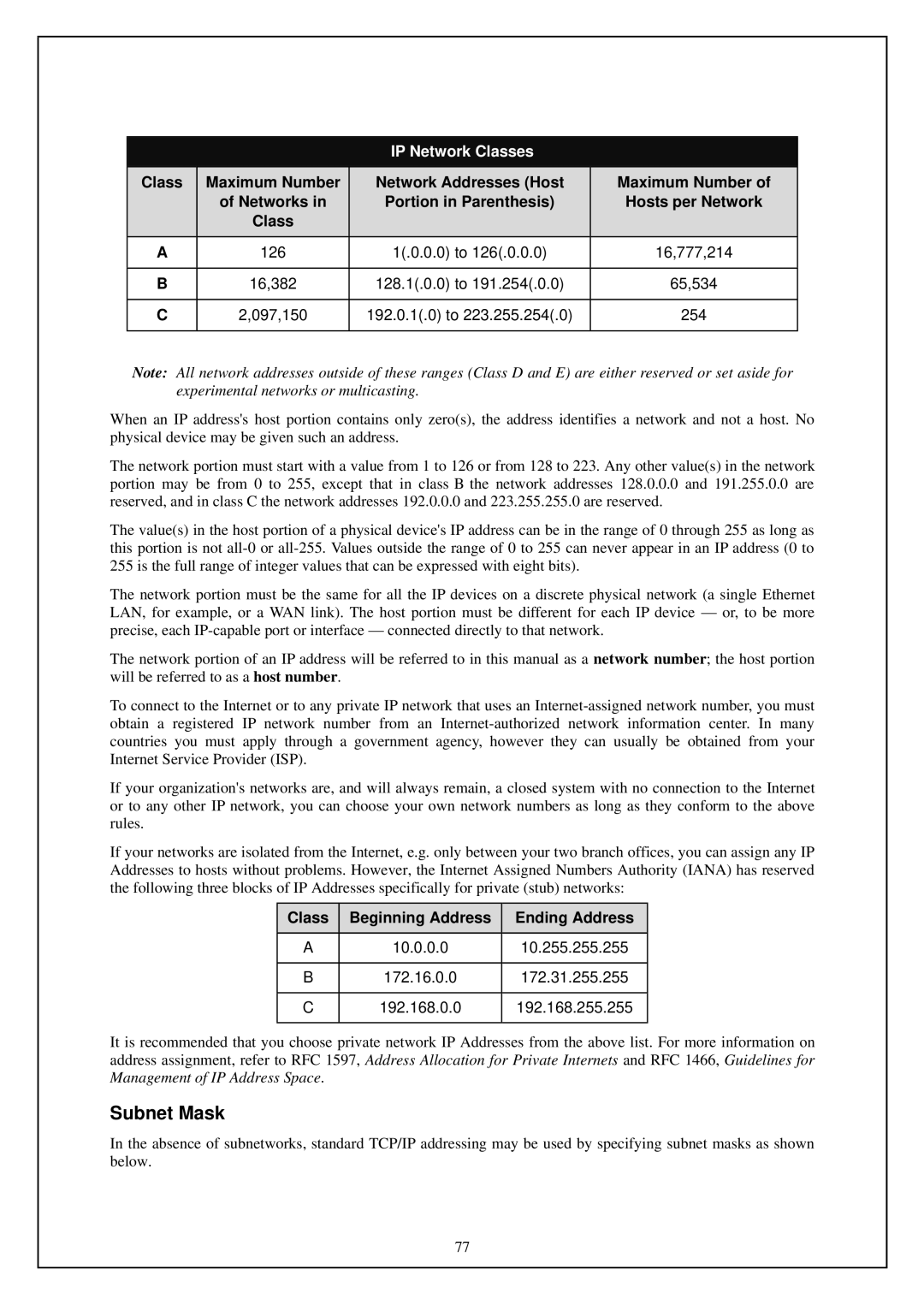
IP Network Classes
Class | Maximum Number | Network Addresses (Host | Maximum Number of |
| of Networks in | Portion in Parenthesis) | Hosts per Network |
| Class |
|
|
A | 126 | 1(.0.0.0) to 126(.0.0.0) | 16,777,214 |
|
|
|
|
B | 16,382 | 128.1(.0.0) to 191.254(.0.0) | 65,534 |
|
|
|
|
C | 2,097,150 | 192.0.1(.0) to 223.255.254(.0) | 254 |
|
|
|
|
Note: All network addresses outside of these ranges (Class D and E) are either reserved or set aside for experimental networks or multicasting.
When an IP address's host portion contains only zero(s), the address identifies a network and not a host. No physical device may be given such an address.
The network portion must start with a value from 1 to 126 or from 128 to 223. Any other value(s) in the network portion may be from 0 to 255, except that in class B the network addresses 128.0.0.0 and 191.255.0.0 are reserved, and in class C the network addresses 192.0.0.0 and 223.255.255.0 are reserved.
The value(s) in the host portion of a physical device's IP address can be in the range of 0 through 255 as long as this portion is not
The network portion must be the same for all the IP devices on a discrete physical network (a single Ethernet LAN, for example, or a WAN link). The host portion must be different for each IP device — or, to be more precise, each
The network portion of an IP address will be referred to in this manual as a network number; the host portion will be referred to as a host number.
To connect to the Internet or to any private IP network that uses an
If your organization's networks are, and will always remain, a closed system with no connection to the Internet or to any other IP network, you can choose your own network numbers as long as they conform to the above rules.
If your networks are isolated from the Internet, e.g. only between your two branch offices, you can assign any IP Addresses to hosts without problems. However, the Internet Assigned Numbers Authority (IANA) has reserved the following three blocks of IP Addresses specifically for private (stub) networks:
Class | Beginning Address | Ending Address |
A | 10.0.0.0 | 10.255.255.255 |
|
|
|
B | 172.16.0.0 | 172.31.255.255 |
|
|
|
C | 192.168.0.0 | 192.168.255.255 |
|
|
|
It is recommended that you choose private network IP Addresses from the above list. For more information on address assignment, refer to RFC 1597, Address Allocation for Private Internets and RFC 1466, Guidelines for Management of IP Address Space.
Subnet Mask
In the absence of subnetworks, standard TCP/IP addressing may be used by specifying subnet masks as shown below.
77
